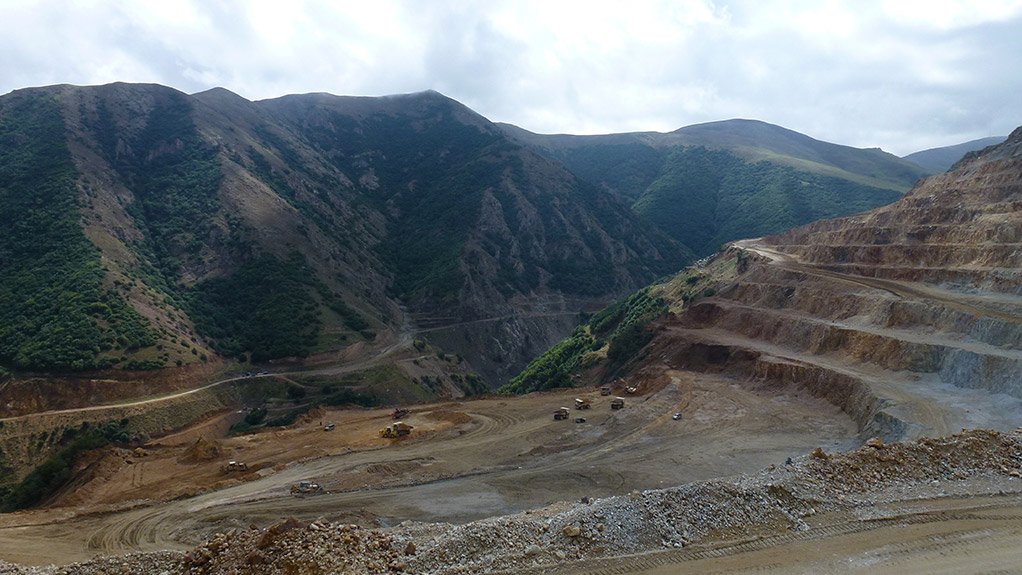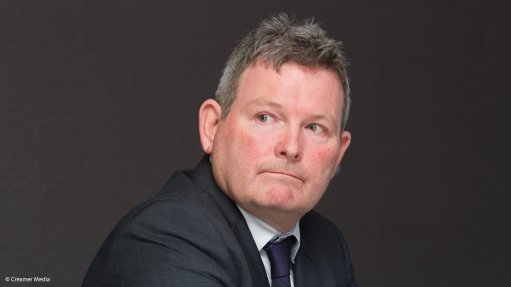Zambian copper mines urged to ‘grasp the opportunity’ as price enjoys strongest, most sustained rally



BREATHING NEW LIFE With copper prices currently up about 40% from previous lows, copper mining companies are restarting stalled operations and even considering expansion
FEEDING THE BEAST Demand has been picking up again in China, which is the world’s leading consumer of copper, absorbing more than 40% of world production
With the copper price hovering around $6 000/t, the red metal is enjoying its strongest and most sustained price rally since the depths of the global commodity slump in January 2015, when it was languishing at around $4 300/t, owing to slower Chinese demand, notes the Zambia Chamber of Mines (ZCM).
It highlights that investment research houses, such as Citi Research and Goldman Sachs, recently issued bullish reports on copper prices for this year, with Citi predicting that the price will reach $7 000/t before year-end and $8 000/t by 2020.
In July, a news report by price reporting agency Metal Bulletin stated that the copper industry had been “shrouded by doom and gloom” over the past couple of years, but, with prices currently up about 40% from previous lows, copper mining companies, such as Freeport-McMoRan and Codelco, were restarting stalled operations and even considering expansion.
The chamber says copper’s resurgence is due to supply and demand forces. More specifically, it comments that demand has been picking up again in China, which is the world’s leading consumer of copper, absorbing more than 40% of world production.
Infrastructure and car manufacturing – both big consumers of the metal – are showing high growth. There is also growing use of copper in the electrical wiring of China’s power grid, which is undergoing “aggressive expansion”, remarks the ZCM.
Moreover, the chamber says that a contributing factor to the copper price resurgence is the uptick in global manufacturing activity, along with the hope that US President Donald Trump’s much-talked-about $500-billion infrastructure programme in the US comes to fruition.
Nonetheless, the ZCM highlights that the US’s share of global copper consumption is only 14%, which is small in comparison to the more than 62% for China and the rest of Asia. Therefore, the chamber elaborates that the demand driving the copper price is of a more global nature.
“While demand has been increasing, available supply from the world’s copper mines has not been able to keep up. There are both short-term and long-term reasons for this,” notes the ZCM.
In the short term, there have been “serious disruptions” to supply in recent months that have kept several thousand tons of copper off the market every single day. They include prolonged strikes at mines in Chile and Peru, which are the world’s two largest copper-producing nations, and a stoppage in production at Freeport-McMoRan’s Grasberg mine, in Indonesia, which on average produces 600 000 t/y of copper.
In the longer term, there will be a shortage of new copper production capacity worldwide and this, the ZCM believes, poses a far more serious challenge to supply.
Meanwhile, the ZCM points out that Zambia has partially bucked the supply-deficit trend, noting that its copper production capacity has greatly improved over the past few years, despite the worst effects of the recent global mining slowdown.
Projects started before the slowdown have recently come to fruition. For example, Canadian base metals producer First Quantum Minerals’ (FQM’s) Kansanshi copper mine, in the North-Western province town of Solwezi, brought a new $900-million smelter into operation in 2015, while FQM’s new Sentinel copper mine, in Kalumbila, started production in the same year and has been steadily ramping up to full production.
Diversified mining major Glencore’s Mopani copper mine, on the Copperbelt, embarked on a $1.1-billion infrastructure upgrade in 2016, which included the sinking of three new shafts; the first ore was hoisted from the main shaft, the Synclinorium, earlier this year.
Further, the ZCM notes that other mining operations in Zambia that had been closed in response to the global mining slowdown have been reopened and laid-off workers are starting to be rehired. Integrated copper producer Konkola Copper Mines, for example, recently reopened its Nchanga openpit operation, on the Copperbelt, which had been put on care and maintenance in 2015.
Hence, the ZCM is of the view that the outlook for the copper sector, which is the mainstay of the Zambian economy, is looking “far more positive” than it has been for a long time. And, most importantly, it is a long-term outlook based on solid supply and demand fundamentals.
“There are many things that affect the price of a metal, but, at the end, it all comes down to three things, [namely] demand, supply and investors’ sentiment,” according to market analysis by MetalMiner, published in March. The publication notes that all three of these factors are looking more bullish for copper compared with last year.
However, the ZCM cautions that these positive developments are not meant to suggest that Zambia now has all the production capacity it needs.
The chamber remarks that the bulk of Zambia’s copper production capacity stems from mining ventures that were initiated several years ago or earlier, when power tariffs, royalties, duties and taxes were all much lower than they are currently. For example, the Sentinel mine is the country’s newest greenfield copper mine, but the investment decision to build it was taken in 2011, which is more than six years ago.
The ZCM says that, given that it takes several years between the decision to invest and full production, the investment decisions that will create tomorrow’s mines need to be taken today.
It states that this is all the more important as growth in Zambia’s copper production is predicted to slow after 2019, according to a 2015 report by the World Bank, pointing out that 2019 is “barely two years away”, which suggests that the country is already running behind schedule.
Comments
Press Office
Announcements
What's On
Subscribe to improve your user experience...
Option 1 (equivalent of R125 a month):
Receive a weekly copy of Creamer Media's Engineering News & Mining Weekly magazine
(print copy for those in South Africa and e-magazine for those outside of South Africa)
Receive daily email newsletters
Access to full search results
Access archive of magazine back copies
Access to Projects in Progress
Access to ONE Research Report of your choice in PDF format
Option 2 (equivalent of R375 a month):
All benefits from Option 1
PLUS
Access to Creamer Media's Research Channel Africa for ALL Research Reports, in PDF format, on various industrial and mining sectors
including Electricity; Water; Energy Transition; Hydrogen; Roads, Rail and Ports; Coal; Gold; Platinum; Battery Metals; etc.
Already a subscriber?
Forgotten your password?
Receive weekly copy of Creamer Media's Engineering News & Mining Weekly magazine (print copy for those in South Africa and e-magazine for those outside of South Africa)
➕
Recieve daily email newsletters
➕
Access to full search results
➕
Access archive of magazine back copies
➕
Access to Projects in Progress
➕
Access to ONE Research Report of your choice in PDF format
RESEARCH CHANNEL AFRICA
R4500 (equivalent of R375 a month)
SUBSCRIBEAll benefits from Option 1
➕
Access to Creamer Media's Research Channel Africa for ALL Research Reports on various industrial and mining sectors, in PDF format, including on:
Electricity
➕
Water
➕
Energy Transition
➕
Hydrogen
➕
Roads, Rail and Ports
➕
Coal
➕
Gold
➕
Platinum
➕
Battery Metals
➕
etc.
Receive all benefits from Option 1 or Option 2 delivered to numerous people at your company
➕
Multiple User names and Passwords for simultaneous log-ins
➕
Intranet integration access to all in your organisation



















